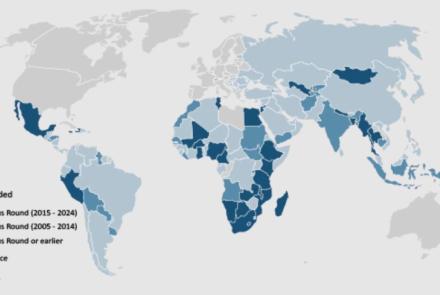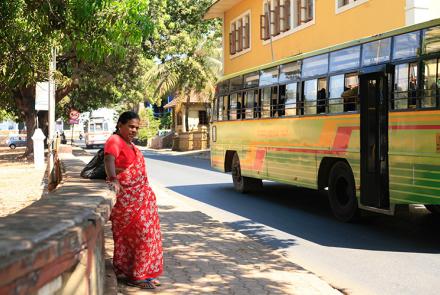MEASURING GENDERED DIMENSIONS OF THE COVID-19 PANDEMIC



The COVID-19 pandemic is likely the most-studied event of our lifetimes. A crisis causing death, hardship, and pain for people around the globe has become a windfall for statisticians and research scientists across disciplines. Efforts to study the pandemic have produced a large and growing set of databases not only on COVID-19 cases and deaths, but also an array of other indicators, including mobility, mask-wearing, social distancing, job losses, care work, attitudes, travel restrictions, schooling disruptions, and government policies. In addition, numerous repositories and data hubs have emerged to help researchers find all this data as well as reports and articles related to COVID-19. Our introduction to the Feminist Economics special issue on COVID-19 provides a list of these various databases and resource repositories. There are three sources for sex-disaggregated data on COVID-19 cases and mortality: two are global (from UN Women and Global Health 50/50), and one is specific to the U.S. at the state level (from the Harvard GenderSci Lab). All of the databases and repositories we located are updated regularly, some even daily or continuously.
Despite the plethora of data available, there is still a strong need for research on the gendered dimensions of the COVID-19 pandemic. The lack of sex-disaggregated data for most of the indicators we found while editing the special issue makes this kind of research difficult. However, as the growing number of published studies, reports, and working papers on gendered impacts show, there are plenty of opportunities to address important issues related to COVID-19 using creative approaches applied to existing data sources or based on new data collection. These approaches include a diverse range of both qualitative and quantitative methods, some of which are based on real-time surveys conducted online and by telephone.
In combing through this literature we have identified several particularly egregious data gaps. One of the biggest gaps is the lack of consistent evidence across and within countries on the impact of the pandemic on intimate partner violence and other forms of domestic violence. Global statistics on intimate partner violence are notably sparse, thus reinforcing the need for country-level studies to document patterns in domestic violence during the pandemic. Another gap is data and research on the intersectional dimensions of the crisis, particularly the losses to livelihoods and health by gender, race, class, disability, migration status, life course, and other markers of disadvantage. More work needs to be done in this area across countries. Yet another gap is data on the unpaid work undertaken by grandparents in providing care for grandchildren. Finally, more gender-responsive data and research efforts are needed on the costs and benefits of alternative policy approaches to dealing with the health and economic repercussions of the pandemic as well as the characteristics of governments and their leaders that follow the various strategies. For example, UN Women/UNDP has taken a lead in creating a tracker that measures the gender-responsiveness of social protection and labor market measures adopted to address the crisis. More such efforts are critical for measuring the gender dimensions of the pandemic.
One of the biggest gaps is the lack of consistent evidence across and within countries on the impact of the pandemic on intimate partner violence and other forms of domestic violence. Global statistics on intimate partner violence are notably sparse, thus reinforcing the need for country-level studies to document patterns in domestic violence during the pandemic. Another gap is data and research on the intersectional dimensions of the crisis, particularly the losses to livelihoods and health by gender, race, class, disability, migration status, life course, and other markers of disadvantage. More work needs to be done in this area across countries. Yet another gap is data on the unpaid work undertaken by grandparents in providing care for grandchildren. Finally, more gender-responsive data and research efforts are needed on the costs and benefits of alternative policy approaches to dealing with the health and economic repercussions of the pandemic as well as the characteristics of governments and their leaders that follow the various strategies. For example, UN Women/UNDP has taken a lead in creating a tracker that measures the gender-responsiveness of social protection and labor market measures adopted to address the crisis. More such efforts are critical for measuring the gender dimensions of the pandemic.
Free access to the special issue of Feminist Economics lasts through July 2021 and can be found here. The full table of contents for this issue is as follows:
Introduction
Feminist Economic Perspectives on the COVID-19 Pandemic
-Naila Kabeer, Shahra Razavi, and Yana van der Meulen Rodgers
Articles
The Gender Gap in COVID-19 Mortality in the United States
 -Sonia Akter
-Sonia Akter
The Gender Dimension of Occupational Exposure to Contagion in Europe
-Iga Magda, Piotr Lewandowski, and Katarzyna Lipowska
Gender, Mobility, and COVID-19: The Case of Belgium
-Giscard Assoumou Ella
Gender Differences in Self-Reported Stress and Health Behaviors of Doctors in Kazakhstan During COVID-19
-Dana Bazarkulova and Janice Compton
The Early Impact of COVID-19 on Job Losses Among Black Women in the United States
-Michelle Holder, Janelle Jones, and Thomas Masterson
Gendered Impacts of COVID-19 in Asia and the Pacific: Early Evidence on the Deepening of Preexisting Socioeconomic Inequalities in Paid and Unpaid Work?
-Papa A. Seck, Sara Duerto Valero, Jessamyn Encarnacion, and Cecilia Tinonin
Explaining Gender Gaps in the South Korean Labor Market During the COVID-19 Pandemic
-Sunyu Ham
Precarity in a Time of Uncertainty: Gendered Employment Patterns During the COVID-19 Lockdown in India
-Sonalde Desai, Neerad Deshmukh, and Santanu Pramanik
Essential Workers and Care Penalties in the United States
-Nancy Folbre, Leila Gautham, and Kristin Smith
COVID-19 and the Pivotal Role of Grandparents: Childcare and Income Support in the UK and South Africa
-Sara Cantillon, Elena Moore, and Nina Teasdale
A Feminist Reading of Italy’s North–South Dualism in the Wake of COVID-19
-Marcella Corsi, Erica Aloè, and Giulia Zacchia
Pushed to the Margins and Stretched to the Limit: Experiences of Freelance Eldercare Workers During the COVID- 19 Pandemic in the Netherlands
-Saskia Elise Duijs, Anouk Haremaker, Zohra Bourik, Tineke A. Abma, and Petra Verdonk
To Return or Stay? The Gendered Impact of the COVID-19 Pandemic on Migrant Workers in China
-Song Yueping, Wu Hantao, Dong Xiao-yuan, and Wang Zhili
Human Mobility, COVID-19, and Policy Responses: The Rights and Claims-Making of Migrant Domestic Workers
-Smriti Rao, Sarah Gammage, Julia Arnold, and Elizabeth Anderson
Hidden Abodes in Plain Sight: The Social Reproduction of Households and Labor in the COVID-19 Pandemic
-Sara Stevano, Hannah Bargawi, Lorena Lombardozzi, and Alessandra Mezzadri
Transformations in the Gender Gaps in Paid and Unpaid Work During the COVID-19 Pandemic: Findings from Turkey
-İpek İlkkaracan and Emel Memiş
Working and Caring at Home: Gender Differences in the Effects of COVID-19 on Paid and Unpaid Labor in Australia
-Lyn Craig and Brendan Churchill
Do Men and Women ‘Lockdown’ Differently? Examining Panama’s COVID-19 Sex-Segregated Social Distancing Policy China
-Clare Wenham and Liana Woskie

- Log in to post comments





